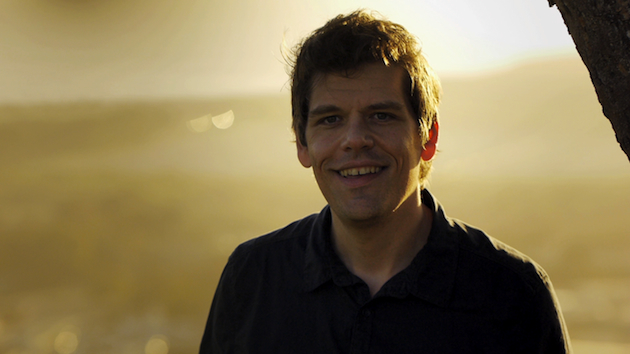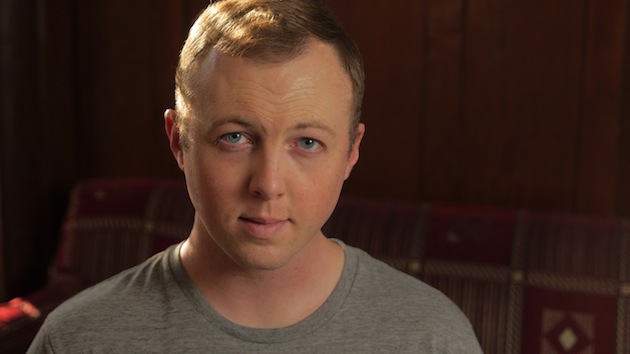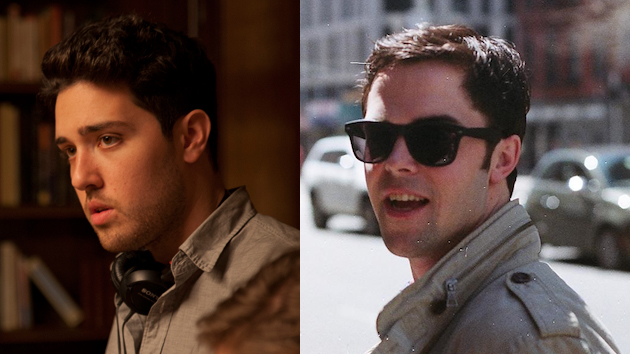In addition to ScreenAnarchy's extensive Sundance coverage starting this week, be sure to keep an eye out for more from Slamdance, which runs in Park City at Treasure Mountain Inn, January 23 - 29.



Jerry White Jr., producer and subject of 20 YEARS OF MADNESS - Documentary
Twenty years after the success of a 90s cult TV show, 30 Minutes of Madness, founder Jerry White Jr. brings the rag tag team of misfits back together to film one final episode – only to find the majority of his cast now suffer from a variety of personal struggles.
Tell us about your film, but not in a plot-centric way, please...
For me, 20 Years of Madness proves a point. It proves that the people I grew up with and collaborated with as a teenager, and who I believed were special, really are.
I believed in all of us and the fact that we didn't "make it" has sort of always haunted me. I only say "sort of," because I'd basically made my peace with it. Twenty years older, I proved to myself, if no one else, that what I believed as a teenager not only was true then, but still is. The difference is, it's no longer important to me, or even relevant, whether anyone else agrees with that, because it's something we believe and something we experience.
We proved this point for ourselves and I think this makes a larger point about community. Sharing something special with a group of people, making something for each other is good in and of itself. The act of creating brings you together, even if it sometimes threatens to break you apart.
So while 20 Years of Madness explores individual characters, shows this beautiful vulnerability both in the footage of us as teenagers and now, and while it's a film very specifically about this group of people from Metro Detroit and their crazy little TV show, it can speak to anyone who has a group of friends with a shared interest, no matter how fringe. I hope it encourages people to embrace their own version of cool and own their weirdness, and not get weighed down by the (often imagined) expectations of others.
Share with us a pivotal cinema related experience or moment from your childhood/adolescence.
March 5th, 1992. Me and about twenty other teenagers pack into the living room of my friend's parents' house and huddle around their TV set. At 9pm, our Public Access TV Show, 30 MINUTES OF MADNESS, premieres on United Cable, Channel 52. We'd all seen the show dozens of times at that point, and some of the individual skits we'd watched far more than that. And yet: now we were watching it air, live, on TV. This meant something. Somewhere, people we didn't know were sitting in front of their television watching it too. This made everything fresher, funnier, weirder—electric. Even the weaker bits were punched up by the context of "being on TV." The absurdity of it all was elevated and underlined. Those mistakes that had bugged me, now got a laugh! Accidents read as intentional. And while I could tell a hundred stories about different fun times making videos as a teenager, this was my first glimpse of how a work can gain its own life when you release it and experience it with an audience, that it can actually improve despite, or even because of, its flaws.
Why Slamdance?
I got into making movies by choosing to make them—even without a budget, with non-professionals, with consumer equipment...we didn't wait for someone to cast us or validate us—we casted and validated ourselves. This was right around the same time a group of first-time filmmakers in the mid-90s were like, "Sundance won't program us? Well then let's program ourselves!" There's a DIY and even revolutionary spirit baked right into the core of Slamdance that speaks to my soul and my earliest run-and-gun teenage public access days. And since our movie is a doc about those days and an attempt to rekindle that spirit, Slamdance couldn't be more fitting.
What does the notion of a sustainable film industry mean to you?
I don't know what it would take to make any industry sustainable. I know what I'd love see in a utopian society—an environment where film and all the arts are able to flourish, where people who want to say something can, and do! And where everyone can earn an honest living by doing what they love. But since I don't know how to make that happen, I just have to think of it this way: make films if you want to—find a way.
You can't make a sprawling epic with thousands of paid extras with a go pro on the weekend (necessarily), but you could do that with animation, or crudely with puppets, or just don't make that script and instead shoot something more feasible. Like the Robert Rodriguez 10-Minute Film School, use what you have already. Don't get hung up on chasing perfect tech or exotic locations (every location is exotic to someone anyway). If you do that, I feel you've got a sustainable ability to make films.
That doesn't mean making a living from them, I'm not doing that myself yet so I can't say how we all could, but I do think there is a way to make sure you can sustainably make movies as long as you're willing to be flexible with the kind you make.
Your essential Park City survival kit
This will be my first time to Park City, so assuming I survive, that'll mean the kit I plan to bring will have done its job. I'm bringing a knit cap, a bunch of zines about our movie, a VHS camera, a half-dozen batteries and tapes, more clean socks and underwear than I'll hopefully need, and a notebook—I find I remember things better when I write them down by hand.
Jeremy Royce, director of 20 YEARS OF MADNESS
Tell us about your film, but not in a plot-centric way, please...
20 Years of Madness is a celebration of creative communities on the fringe of society, coming together to make art for themselves. In our case, many of the subjects are struggling with various life challenges ranging from mental illness to drug addiction and these challenges often lead to serious isolation.
Our film shows how having a shared creative project can help us overcome that isolation. It's also a film about the power of having fun. Chronicling the lives of the subjects for over twenty years through the VHS footage they shot as teenagers, the film shows that sometimes the most profound effect we can have on our friends is to make them laugh.
Share with us a pivotal cinema related experience or moment from your childhood/adolescence.
I always loved movies and photography. I started carrying a disposable camera around with me when I was ten, but I never had the chance to use video equipment as a kid. I left home when I was 16 and moved to Berkeley, California. At Berkeley High I was lucky enough to take a video production class. Having the opportunity to play with video cameras and editing software was a dream come true. I immediately started skipping my other classes to edit in the lab. My first short film was accepted into the Bay Area High School film festival and the moment the picture flashed on the screen I was changed. I felt the audience reacting to this thing I had been working on by myself for months. It wasn't a great film, I wouldn't even say it was good, but I realized the capacity film offered to communicate an emotional truth. That's what I'm still chasing.
Why Slamdance?
Slamdance was our dream festival. It's DIY, it's a little fringe, it's a festival that celebrates outsiders. That's what our doc is all about. I wanted to tell a story about these fascinating characters with a rich shared history who had been filming since they were kids. 20 Years of Madness operates more like a narrative film than a documentary. The film follows a group of teenagers who made a TV show in the 90s as they reconnect twenty years later to make a new episode. The core of their relationship is built through making movies together. As a film festival "by filmmakers for filmmakers," Slamdance is the perfect home for our documentary. I wouldn't want to be premiering anywhere else.
What does the notion of a sustainable film industry mean to you?
To have a sustainable film industry you first have to have a thriving festival circuit. There are more and more films being made every year and it's impossible for all them to find their audience. The curatorial process of festivals gives a little more attention to those films that may otherwise disappear into obscurity. Another aspect of a sustainable film industry is the ability to pay your crew. We can't make films all by ourselves. We have to have collaborators and as great as it might sound, we can't just ask everyone to work for free.
Crowdfunding was a huge help for us. We had two successful campaigns while making 20 Years of Madness. Without the financial opportunity it provided, we would have never been able to hire our crew or finish this film. You can only work for free for so long. Eventually we all need to get paid. In addition to raising the money to pay people, having a direct line to your future audience through crowdfunding gets us all a lot closer to a sustainable film industry.
Your essential Park City survival kit
I've never been to Park City before so I'm still trying to figure that one out. In addition to chapstick and warm clothes, I'm bringing a bunch of my cast and crew. Having your community to share the event with is going to make everything else better. I wouldn't be in Park City without them.
Dan Berk & Bobby Olsen, directors of BODY - Narrative
After three twenty-something girls break into a mansion and inadvertently murder the groundskeeper, they slowly self-destruct as they decide what to do with the dead body in the living room.
Tell us about your film, but not in a plot-centric way, please...
Dan Berk/Bobby Olsen: Body is a thriller about three girls that stumble into a horrific and dangerous situation when they break into a seemingly empty mansion. It's about what happens when people get put into stressful and chaotic places. We all think we know what we would do, but it's a different story when you're actually faced with hard choices. The line between right and wrong can blur pretty drastically. At its core the film is a study of moralism vs. survivalism, and how far down the rabbit hole you can tumble when you start making selfish and destructive decisions in the name of self-preservation.
Share with us a pivotal cinema related experience or moment from your childhood/adolescence.
DB: When I was around five years old, my parents got a Hi-8 camera that I'm not sure they ever used. But one day over the summer I picked it up with my buddy and we shot a little movie called "How The West Was Won". It contained one scene and took place on my front yard. Not sure there was anything Western about it to be honest. We used a plastic lawn chair as a tripod. Once we were finished I think I watched it a hundred times. Not everybody can remember the exact moment they fell in love with filmmaking, but that was mine.
BO: My earliest cinematic memories don't even involve a screen. When I was kid, I was obsessed with action figures. I had a box of them in my room and I would just sit in there for hours, acting out these epic sagas. Every figure had a different personality/voice/agenda (completely unrelated to whatever universe the superhero/villain was from). Every time I had to come down to dinner, I would put a pin in the story and pick it back up the next day. It was almost like a daytime soap opera in that way; it was this never ending narrative. Making movies activates all of those same pleasure regions in my brain.
Why Slamdance?
DB/BO: Obviously the backdrop of Park City is incredible, but Slamdance specifically is an incredible indie film festival. There's something special about having one shot to get in, for your first feature. We love the identity of the festival. It's all about down and dirty, do it yourself filmmaking - something we definitely understand.
What does the notion of a sustainable film industry mean to you
DB/BO: As far as the industry itself goes, our only concern is being able to make movies. We're not at the point where studios are knocking down our door, trying to get us to direct. We have to make it happen ourselves.
Luckily, this is a great time to be doing that. You can go out there with a small budget and make something that still meets the visual standards most viewers are used to. On top of that you have more options with distribution - digital, on demand, etc. It might not be a "golden age" for independent film, but things at least seem to be trending in the right direction. The industry is always going to be evolving. We just have to do our best to keep up with it so that we can continue to make a living doing what we love.
Your essential Park City survival kit
DB: Business cards, iPhone charger, ginger ale for mild hangover, sunglasses to blend into the crowd.
BO: Solar blanket, water purification tablets, rope, lots of socks, hunting knife, antibiotics, flint and steel, SAS survival handbook (I'm assuming we're talking about our plane going down and getting embroiled in an Alive-esque scenario)

Around the Internet
Recent Posts
Leading Voices in Global Cinema
- Peter Martin, Dallas, Texas
- Managing Editor
- Andrew Mack, Toronto, Canada
- Editor, News
- Ard Vijn, Rotterdam, The Netherlands
- Editor, Europe
- Benjamin Umstead, Los Angeles, California
- Editor, U.S.
- J Hurtado, Dallas, Texas
- Editor, U.S.
- James Marsh, Hong Kong, China
- Editor, Asia
- Michele "Izzy" Galgana, New England
- Editor, U.S.
- Ryland Aldrich, Los Angeles, California
- Editor, Festivals
- Shelagh Rowan-Legg
- Editor, Canada









